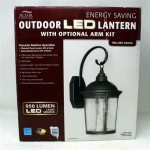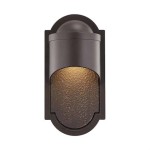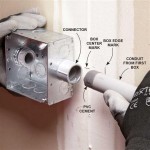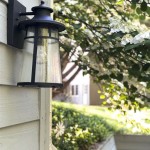How Much Wood Does An Outdoor Boiler Use Per Day?
Understanding the wood consumption of an outdoor boiler is crucial for homeowners considering or currently utilizing this heating method. The amount of wood an outdoor boiler consumes daily is not a fixed figure and heavily depends on a variety of factors. These influencing elements range from the size and insulation of the building being heated to the prevailing weather conditions and the efficiency of the boiler itself.
Outdoor boilers, also known as outdoor wood furnaces, are typically located outside the building they are heating, serving as a central heating system that distributes heat through insulated underground pipes. They are designed to burn wood or other biofuels, providing an alternative to traditional heating systems that rely on fossil fuels like oil or gas. However, the convenience and potential cost savings of these systems are directly tied to understanding and managing wood consumption.
One of the first steps in estimating daily wood usage is identifying the building's heating load. This refers to the amount of energy needed to maintain a comfortable indoor temperature. A larger, poorly insulated building will naturally require more energy and, consequently, more wood to keep warm compared to a smaller, well-insulated structure. Factors like window efficiency, wall insulation R-value, and air leakage significantly impact the heating load.
The type of wood used is also a major determinant of wood consumption. Different species of wood have varying heat outputs, measured in British Thermal Units (BTUs) per cord. Hardwoods like oak, maple, and ash generally produce more BTUs per cord than softwoods like pine or fir. Using a higher BTU wood means less wood needs to be burned to generate the same amount of heat. Furthermore, the moisture content of the wood is critical. Wet wood burns inefficiently, wasting energy as the water evaporates before the wood can effectively combust. Seasoned wood, which has been allowed to dry for at least six months to a year, is essential for optimal boiler performance and reduced wood consumption.
Boiler efficiency is another key factor. Newer, more advanced outdoor boiler models often incorporate features designed to improve combustion and reduce heat loss. These features may include insulated fireboxes, oxygen sensors, and automated controls. A more efficient boiler will extract more usable heat from each piece of wood, resulting in lower overall consumption. Regular maintenance is also essential for maintaining boiler efficiency. Cleaning the firebox, checking for air leaks, and ensuring proper airflow can all contribute to reduced wood usage.
The surrounding climate clearly affects wood consumption. Colder temperatures obviously necessitate more heat, leading to increased wood burning. The severity and duration of the winter months will directly impact the total amount of wood needed for the heating season. Factors such as wind chill and the frequency of extremely cold days can also increase heating demands.
Beyond these core considerations, several other factors can influence daily wood usage. Thermostat settings play a significant role. Maintaining a higher indoor temperature requires more energy, and the wood consumption will increase accordingly. Lifestyle choices, such as frequently opening and closing doors or windows, can also contribute to heat loss and increased wood consumption.
The size of the outdoor boiler itself is relevant. An undersized boiler will struggle to maintain the desired temperature, leading to continuous burning and potentially increased wood consumption. Conversely, an oversized boiler may cycle on and off frequently, which can also be inefficient. Matching the boiler size to the building's heating load is crucial for optimal performance.
Estimating the actual amount of wood consumed daily requires careful consideration of all these variables. While a precise figure is difficult to determine without specific data and modeling, it is possible to provide a general range. In mild winter conditions, a well-insulated home heated by an efficient outdoor boiler using seasoned hardwood might consume as little as one to two pickup truck loads of wood per week. However, in severe winter conditions, a larger, poorly insulated building heated by an older, less efficient boiler using softwood could potentially consume significantly more, possibly three to four pickup truck loads per week, or even more.
Calculating Your Heating Load
Determining the heating load of a building is a complex process that often involves professional assessment. However, there are some basic estimations that a homeowner can undertake to get a general idea. This usually involves factoring in the square footage of the heated area, the insulation levels of the walls, roof, and foundation, the efficiency of the windows and doors, and the average temperature difference between the desired indoor temperature and the average outdoor temperature during the coldest months of the year. Online calculators and worksheets can assist in this process, providing a starting point for estimating heating needs.
Professional energy audits can provide a more accurate assessment of a building's heating load. These audits typically involve a thorough inspection of the building's envelope, including thermal imaging to identify areas of heat loss. The auditor will then provide recommendations for improving energy efficiency, such as adding insulation, sealing air leaks, and upgrading windows. Implementing these recommendations can significantly reduce the heating load and, consequently, lower wood consumption.
Once the heating load is estimated, it can be used to select an appropriately sized outdoor boiler. Boiler manufacturers typically provide sizing guidelines based on the heating load of the building. Choosing a boiler that is neither too small nor too large is crucial for optimal efficiency and reduced wood consumption.
Wood Selection and Storage
Choosing the right type of wood and storing it properly are essential for maximizing the efficiency of an outdoor boiler. As mentioned earlier, hardwoods generally provide more BTUs per cord than softwoods. However, the specific BTU content of different wood species can vary, so it is helpful to consult a wood BTU chart or local resources to determine the best options available in your area.
Seasoning wood is a critical step in preparing it for use in an outdoor boiler. Freshly cut wood can have a moisture content of 50% or more, which significantly reduces its burning efficiency. Seasoning involves splitting the wood into manageable pieces and stacking it in a well-ventilated area, allowing it to dry naturally. The ideal moisture content for burning wood is typically between 20% and 25%. It usually takes at least six months to a year for wood to season properly, depending on the species, the climate, and the stacking method.
Proper wood storage is also important. The wood should be stacked off the ground to prevent moisture absorption and promote airflow. Covering the woodpile with a tarp or roof can help protect it from rain and snow, further accelerating the drying process. A well-organized woodpile also makes it easier to access and manage the wood supply.
Boiler Maintenance and Efficiency Optimization
Regular maintenance is essential for maintaining the efficiency of an outdoor boiler and minimizing wood consumption. This includes cleaning the firebox regularly to remove ash and creosote buildup. Creosote is a flammable substance that can accumulate in the chimney and firebox, reducing efficiency and increasing the risk of fire hazards. The frequency of cleaning will depend on the type of wood being burned and the operating conditions of the boiler.
Checking for air leaks is another important maintenance task. Air leaks can reduce the efficiency of the boiler by allowing cold air to enter the firebox, which cools down the combustion process. Inspecting the door seals, flue connections, and other potential leak points and sealing any gaps can improve efficiency.
Ensuring proper airflow is also crucial for efficient combustion. The air vents and dampers should be adjusted to provide the correct amount of air to the fire. Too much air can cool down the fire, while too little air can lead to incomplete combustion and increased creosote buildup. Consulting the boiler's owner's manual for specific recommendations on airflow settings is recommended.
Consider the use of automated controls, if your boiler offers them. Modern outdoor boilers often come equipped with automated controls that optimize combustion based on factors such as oxygen levels and temperature. These controls can significantly improve efficiency and reduce wood consumption.
Furthermore, it's crucial to regularly inspect the underground insulated pipes that connect the boiler to the building. Any damage or degradation of the insulation can lead to heat loss, increasing wood consumption. Promptly repairing any leaks or damage to the pipes is essential.
By paying close attention to these factors and implementing best practices, homeowners can effectively manage their wood consumption and maximize the efficiency of their outdoor boilers, leading to cost savings and a more sustainable heating solution.

How Much Wood Does A Outdoor Boiler Use

Outdoor Boiler Outdoorboiler Com

How An Outdoor Boiler Works Ez Boilers

Outdoor Wood Boiler How Much Burned In 1st Month

Wood Boiler Basics Obadiah S Boilers

2024 Outdoor Wood Furnace Boiler S Homeguide

Outdoor Wood Furnace Pros And Cons Is It Right For You

Outdoor Boiler Edwards Hearth Home

Battle Over Boilers Outdoor Units Can Be Good For Wallets Bad Environment Daily Freeman

Forced Air Outside Wood Burning Furnace







